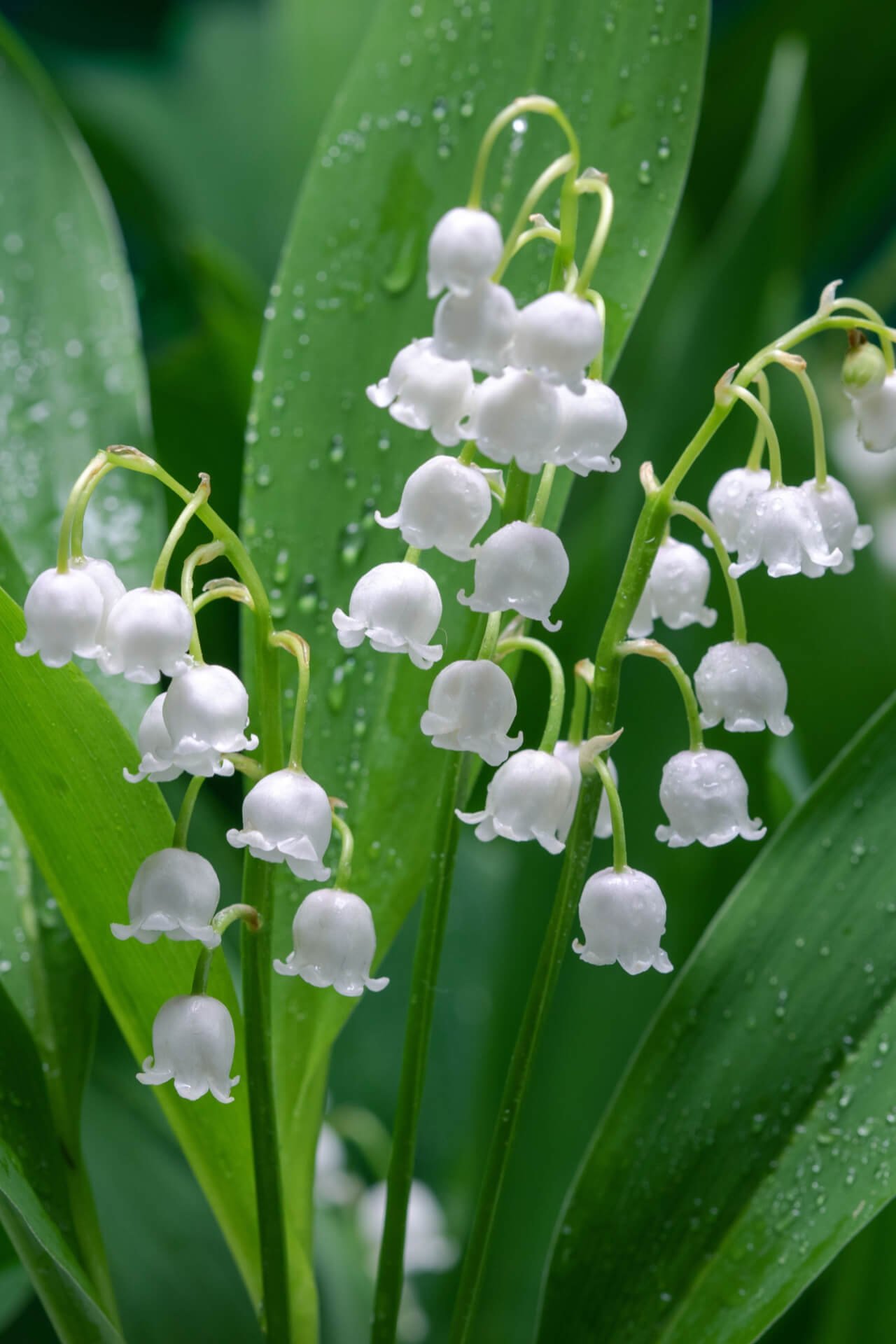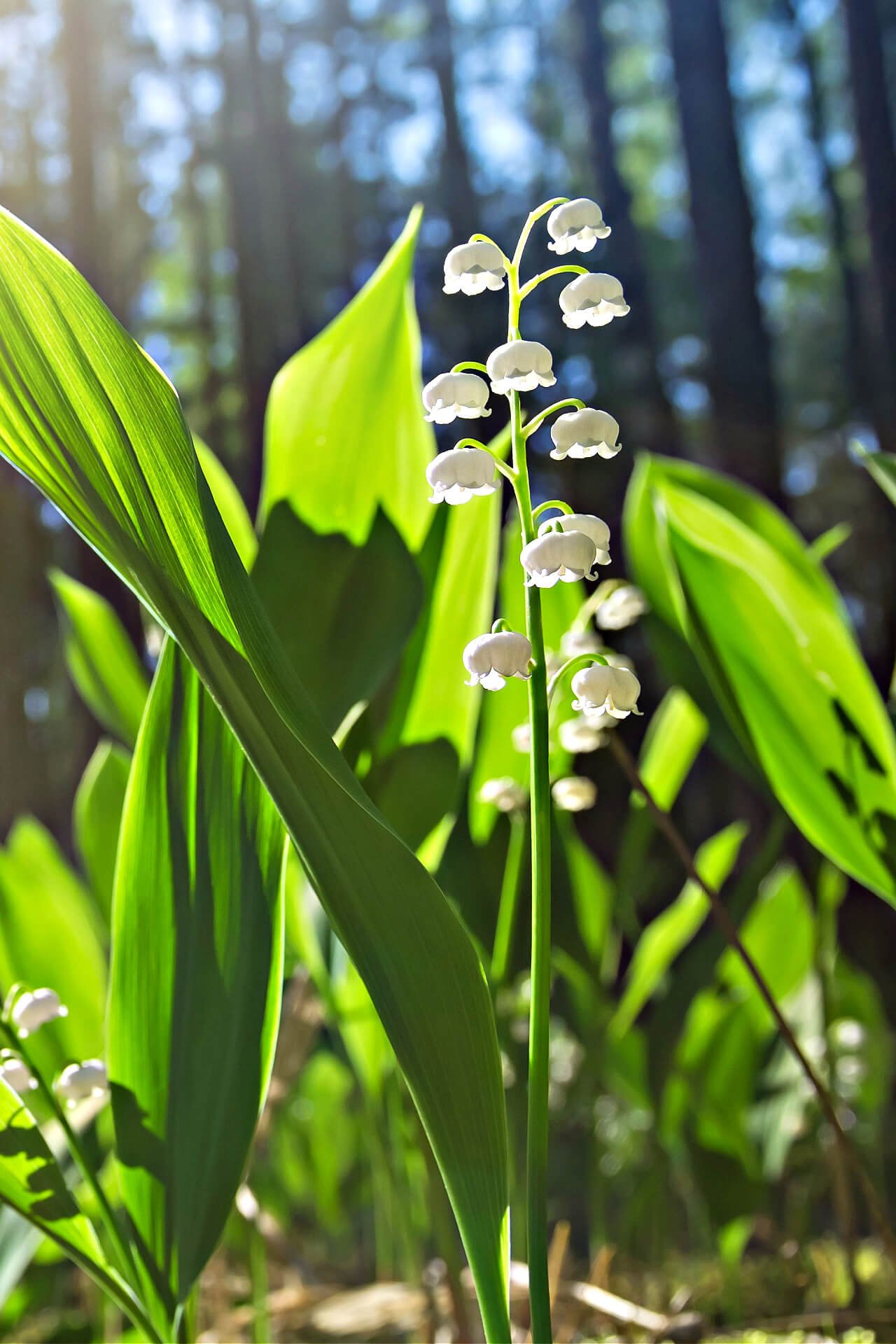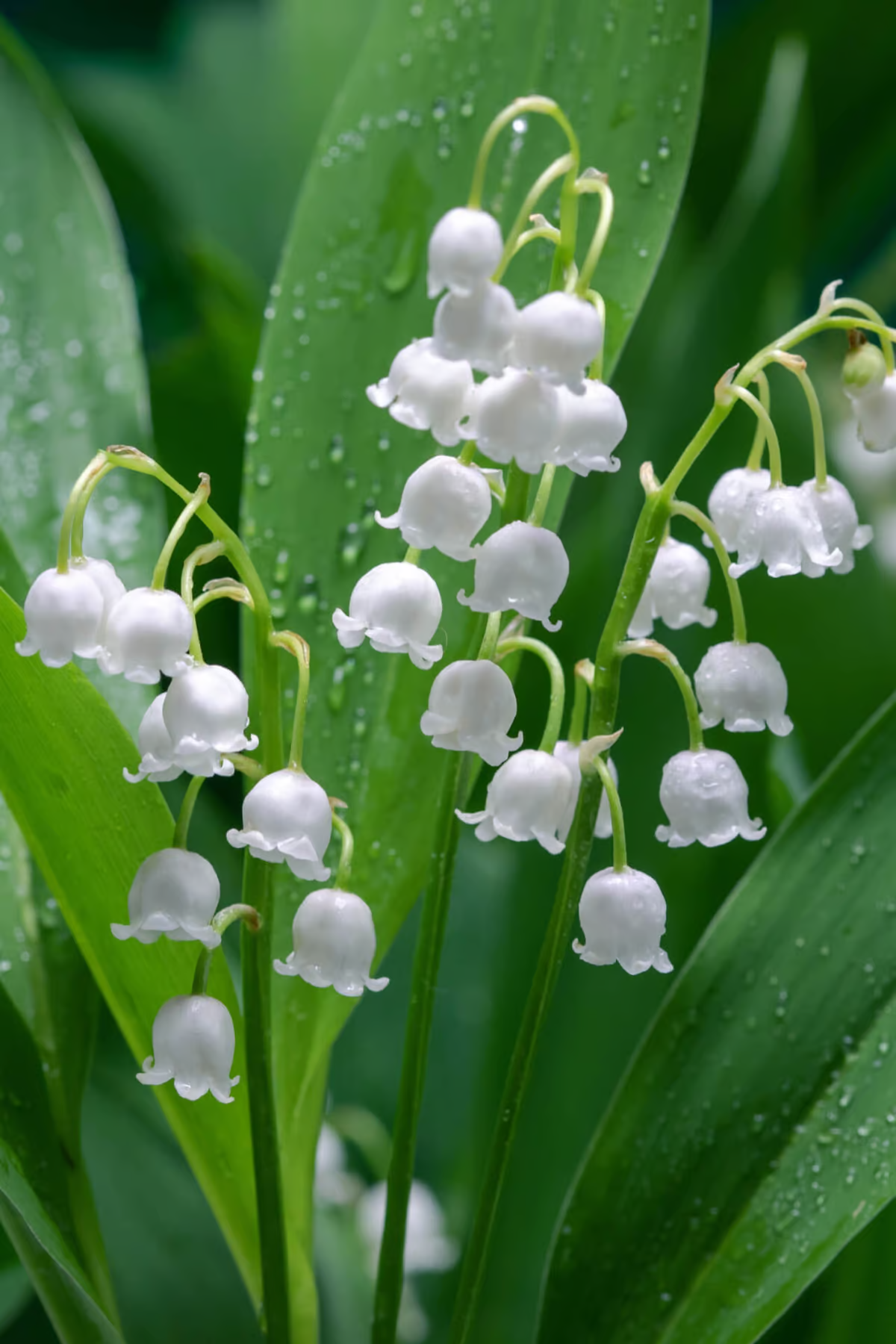



Lily Of The Valley
Low-maintenance perennial plant
Resilient and hardy growth
Elegant white, bell-shaped flowers
Thrives in
ZONE 2ZONE 3ZONE 4ZONE 5ZONE 6ZONE 7ZONE 8ZONE 9This plant ships:
7-10 Days1 Year Guarantee on all plants
Lily of the Valley - Convallaria majalis
The Lily of the Valley is a classic flower you may have heard of in songs, poems or stories. It is a European and Asian native, prized by the Royal Horticulture Society for its delicacy and association with purity and beauty. It was introduced to the United States from Europe, and has since naturalized. It is still considered invasive in many parts of the midwest due to its fast growth rate and aggressive spread properties, but its tendency to overpower is mostly a problem in lawns and gardens.
Plant Details - Lily of the Valley
Family: Asparagaceae
Light Requirement: Partial shade
Water Needs: Moderate
Height: 6-12 in
Spread: 12 in
Growth Rate: Fast
Soil Preference: Loamy, Moist
Bloom Time: April, May
Flower Color: White
Wildlife Value: Moths, Butterflies, Beetles
Notable Characteristics - Lily of the Valley
This delicate plant is actually considered a ground cover, despite the fact that it can reach up to 12 inches high. This is because its foliage is rather low-growing and lush, with pairs of wide, oval leaves that come to a point all around the plant. The leaves create a dense mat of foliage around the base, and can be nearly as long as the plant is tall, creating a ground cover effect. The leaves of Lily of the Valley are a deep emerald green and lightly ribbed, and sturdy but flexible. Their wide, round shape makes them perfect to catch the raindrops this plant enjoys.
Landscape and Maintenance
The Lily of the Valley is a very fragrant flower that thrives in the shade. It enjoys moist, well-drained soil that is full of organic compounds, making it a perfect use for your compost. The white, bell-shaped flowers can be found in groups of 5 to 15 at the end of this plant’s thin stem, hanging down like pendants opening towards the ground. They can swing freely in the breeze due to their thin stems connecting them to the main stem, which gives them an even further bell-like appearance, as the tiny blooms ring delicately. This flower is an utter beauty and its bright white and deep emerald colors will glow in your shady garden.
This Is How Your Plants Will Look upon Delivery

Bloom Season
Spring
Bloom/Foliage Color
White
Height at Maturity
Under 12"
Care
Lily of the Valley thrives in well-drained, moist soil. Keep the soil damp, mulch around the plants, and regularly remove spent flowers and dead leaves. Be careful, as all the plant's elements are toxic if ingested.
Plant Reproduction
Lily Of The Valley spreads quickly by underground stems called rhizomes and seeds.
Shipping date depends on the date displayed and chosen when you order from the product's page.
We only accept returns on plants verified dead. If you think your plants have died, we offer a 1 year warranty, please use this File a Claim Link to verify dead plants and start with return warranty process.






Charming Fragrance:
Lily of the Valley emits a sweet, enchanting scent that adds a lovely aroma to any garden or indoor space.
Seasonal Appeal:
Blooming in early spring, Lily of the Valley provides a delightful burst of color and fragrance at the start of the growing season.
Beautiful Blooms:
Lily of the Valley features delicate, bell-shaped white flowers that add a classic and enchanting touch to shaded areas.
Compact Growth:
With their low, spreading habit, Lily of the Valley is perfect for ground cover or filling in gaps in garden beds.
Caring Tips
How do I care for my Lily Of The Valley?
Each box contains detailed care instructions and information about your product. But here's the basics.
Care Tips
Lily of the Valley thrives in well-drained, moist soil. Keep the soil damp, mulch around the plants, and regularly remove spent flowers and dead leaves. Be careful, as all the plant's elements are toxic if ingested.
Light Requirements
Lily of the Valley flourishes best in partial to full shade and prefers more excellent, moist conditions. It can tolerate dappled sunlight but does not do well in full sun. Plant it in an area with filtered light or morning sun and afternoon shade for optimal results.
Hardy Planting Zones
2 • 3 • 4 • 5 • 6 • 7 • 8 • 9
Header
Use this content to share information about your store and products.
Frequently Asked Questions
How often should I water my plants?
How do I know if my plant is getting too much or too little sunlight?
What should I do to prepare my plants for winter?
What are the signs that my plant needs fertilizing?
How can I prevent pests from damaging my plants?
How do I choose the right plant for my climate zone?






